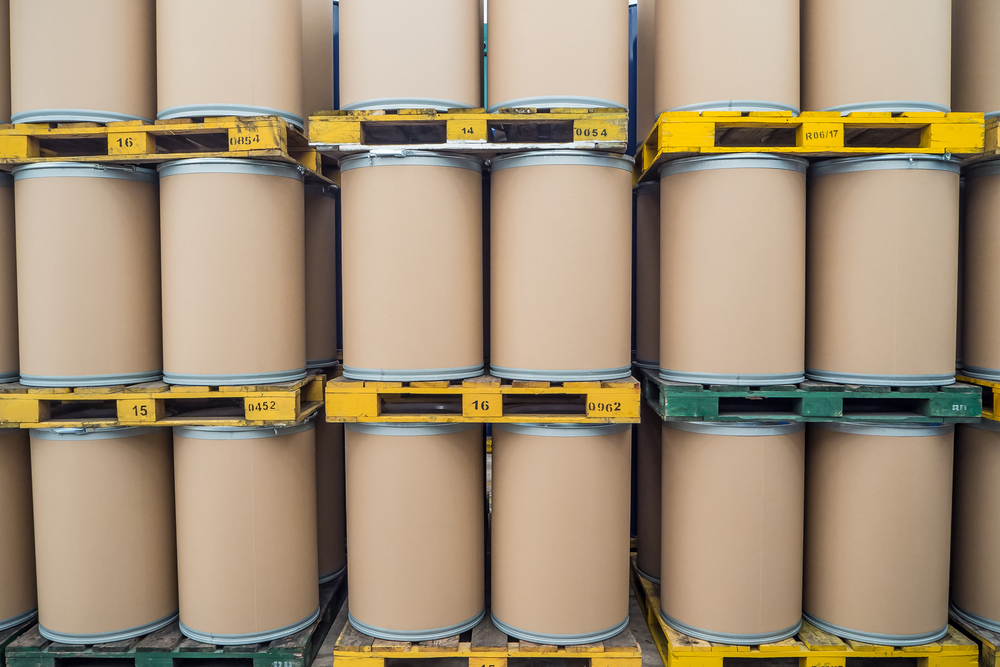In our latest installment of Ask the Expert, brought to you by the team of industry experts at EHS Hero®, we look at a recent question from a subscriber asking about 55-gallon fiber drum compatibility requirements. See what the experts had to say.
Q: Do 55-gallon fiber drums meet the requirements for compatibility in 40 CFR 112.8(c)(1)? Does the secondary containment requirement in 40 CFR 112.8(c)(2) apply to these drums?
Complete Question: A Tier 1 qualified facility has 4 55-gallon fiber drums used for accumulating used absorbent that has been used for oil and non-oil products. Do these fiber drums meet the requirements for compatibility in 40 CFR 112.8(c)(1), if applicable? Does the secondary containment requirement in 40 CFR 112.8(c)(2) apply to these drums?
Answer: To answer the first part of your question, 40 CFR 112.8(c)(1) requires that owners or operators of onshore facilities (excluding a production facilities) not use a bulk storage container for the storage of oil unless its material and construction are compatible with the material stored and conditions of storage such as pressure and temperature. A bulk storage container is defined as any container used to store oil that has a capacity of 55 gallons or more. “Oil” is defined as oil of any kind or in any form, including oils and greases such as petroleum, fuel oil, sludge, synthetic oils, mineral oils, oil refuse, or oil mixed with wastes other than dredged spoil. Consequently, 40 CFR 112.8(c)(1) applies to the 55-gallon drums in your scenario.
The compatibility of the material and construction of the drums with the used absorbent they store will depend on the characteristics of the particular drums, the absorbent, and the oil and non-oil products absorbed. Some fiber drums are designed to store dry materials, others are more suited for liquids and semi-liquids, and still others are appropriate for hazardous materials. Consulting the manufacturers’ recommendations and the safety data sheets (SDS) for each product involved will help inform the compatibility determination. You should also be mindful of the fact that inspectors will look at whether the material and construction of the drums is compatible with the conditions of storage, such as the pressure, temperature, and soil conditions of the storage area, to determine container compatibility.
To answer your second question, the secondary containment requirements of 40 CFR 112.8(c)(2) apply to the 55-gallon drums. As discussed above, a bulk storage container is defined as any container used to store oil that has a capacity of 55 gallons or more. All bulk storage containers at a regulated facility (except mobile refuelers and other non-transportation-related tank trucks) must comply with the specific sized secondary containment requirements of 40 CFR 112.8(c)(2). The secondary containment must be designed to hold the entire capacity of the largest single container and sufficient freeboard to contain precipitation. To quote the EPA’s SPCC Guidance for Regional Inspectors, “Secondary containment is required for all facilities with bulk storage containers, large or small, attended or unattended.” Consequently, Tier I facilities are not exempt.
However, an owner or operator may determine that secondary containment is impracticable under 40 CFR 112.7(d), if it is not practicable to design a secondary containment system that can hold the capacity of the largest single container plus sufficient freeboard. If secondary containment is determined to be impracticable for the drums, an EPA inspector would check that the SPCC plan clearly explains why secondary containment is not practicable and that the facility is complying with alternative regulatory requirements, such as conducting both periodic integrity testing of the containers and periodic integrity and leak testing of valves and piping. In such a case, however, a Tier I qualified facility would not be able to self-certify the alternative measures and would require a professional engineer to review and certify its SPCC Plan in writing.

